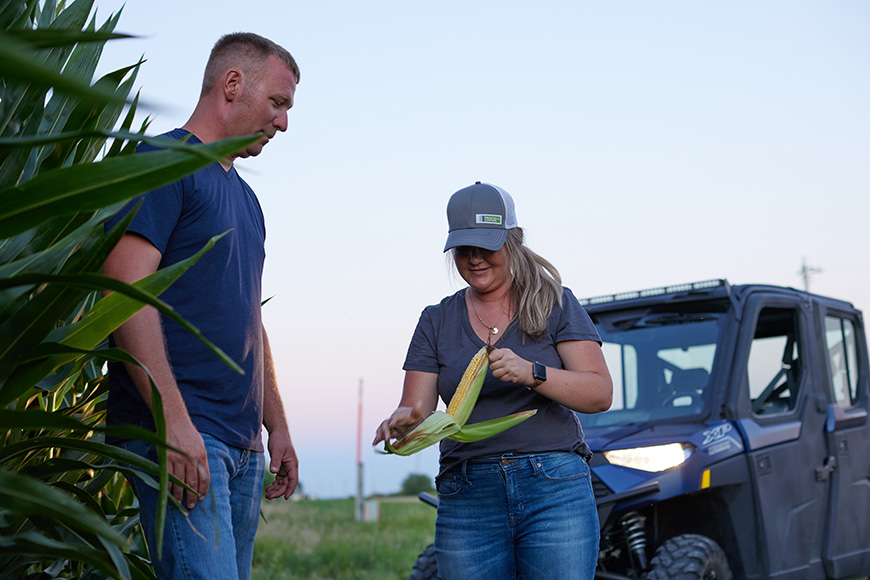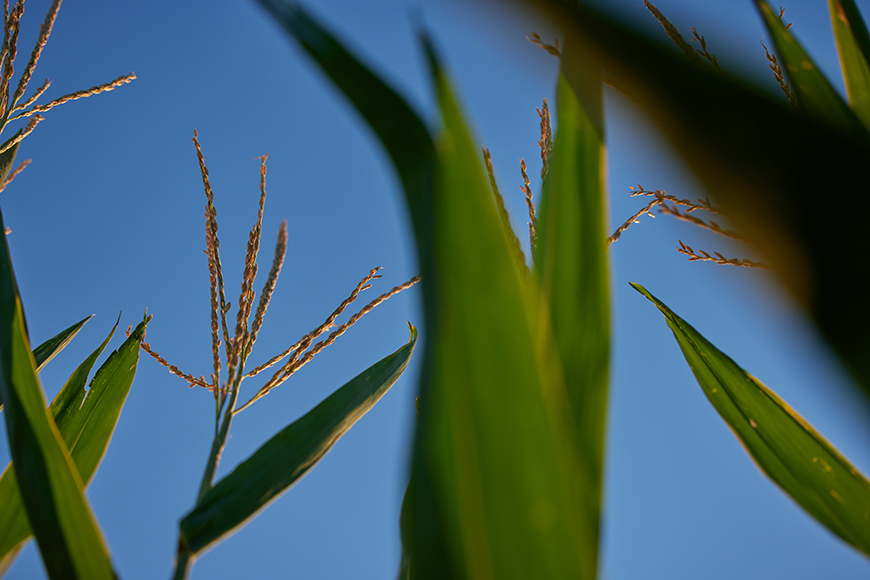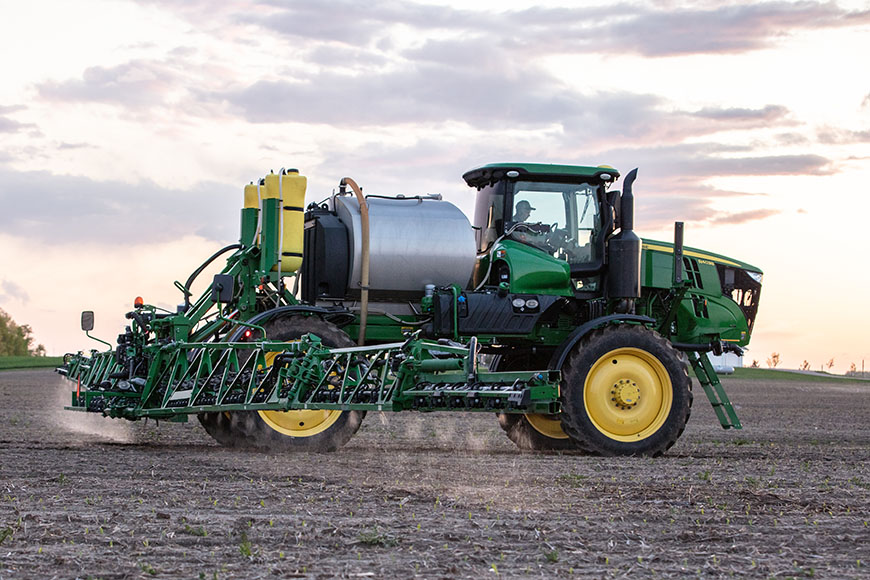Effective Ways to Evaluate Seed Performance in August

Yield data reveals a lot about the payoff of a seed decision, but it doesn’t tell the whole story. Before you fire up the combine this fall, take time to evaluate how your variety and hybrid choices are performing in the field. Here are the top five things I look for when walking fields in August.
1. Standability and Plant Health
When evaluating a late-season corn field, I first note whether plants are standing. It may seem obvious, but this is a major indicator of various issues that can arise during the season. If the plant is root lodged or goosenecked, try to deduce the cause so you can adjust and prevent the problem next season. Common causes of lodging can be root rot, corn rootworm pressure and roots that did not set properly.
In August, it’s also a great idea to get out into your corn fields and dig up some roots. Look at how deep the roots penetrated and how much they spread out. Roots are an excellent diagnostic indicator of the plant’s health. Evaluations like this will help determine if your hybrid’s root type suits your field’s soil conditions.
I also assess how healthy and green the plant is as these factors directly correlate to test weight and grain fill. A consistent ear set is also critical. If ear height fluctuates throughout a field, it often means emergence wasn’t even and caused inconsistencies in ear size and uniformity. This is a concern because a uniform ear set helps drive yields to the highest potential.
Like corn, standability is a priority in soybeans as well. Plants should look disease free, big, bushy and tall. Evaluate how effective your prescription rates were and how they affected soybean standability. Could you have bumped the population up? Do you need to take it down a bit next time?
2. Disease Pressure
Once you’ve looked at plant health and standability, go further into the field and examine leaves to check for disease pressure. How did the hybrid’s rating hold up? Does this hybrid have the resistance it needs to thrive among the disease spectrum in this field? After answering these questions, you may determine it’s best to go with different plant genetics in the future.
Iron deficiency chlorosis (IDC) tolerance is an important factor to evaluate in soybeans at this point in the season. If you find significant pockets of IDC, you may need to choose a variety with a better IDC score in the future.
3. Insect Pressure
There are a few key insects you should be checking your corn fields for right now. The first is European corn borer. These pests burrow into the stalk and sometimes the corn ear, cob or kernels. If populations are high enough, they can cause lodging. In corn-growing regions further west, Western bean cutworms can become a serious problem. They cause a lot of ear feeding and can blow through many of the existing traits. If you discover an issue, Western bean cutworm must be managed with a trait moving forward because it’s currently one of the only effective ways to control the pest.
4. Herbicide Efficacy
August is also a good time to start evaluating how your herbicide programs worked this season, especially if you used traited platforms like the Enlist E3® soybean system. Evaluate weed pressure and identify how the trait fits into your operation. Are there any tweaks that should be made to your herbicide plan next year for better control?
5. Nutrient Deficiency
As you’re doing your August walk-through, look closely at leaves three, four and five from the base of the corn plant. These will be the most telling of nutrient deficiencies. If you notice visual deficiency symptoms and they have progressed quite far up the plant, consider managing those factors by choosing more fitting hybrids moving forward, especially if nitrogen is the nutrient in question.
Response-to nitrogen (RTN) scores, based on randomized, replicated research trials conducted at Answer Plot® locations, are a valuable tool to determine the right hybrid for nitrogen-deficient fields. If you’re planting on ground with low natural fertility and low organic matter that doesn’t supply much nitrogen naturally through mineralization, I recommend selecting a low-RTN hybrid.
If you notice a deficiency, that could signal an opportunity to improve your fall fertility strategy or overall nutrient program.
A Few Final Takeaways
-
If a field has a history of the same disease or deficiency, choose a hybrid intended to combat that issue.
-
Use August observations to help inform an effective harvest order.
-
If you identify an issue, ask yourself if it’s genuinely a poor-performing hybrid or if there was a missed management opportunity that could have supported the hybrid more effectively.
To get RTN scores or learn more about 2024 seed evaluation, contact your local CROPLAN retailer.
All photos are either the property of WinField United or used with permission.
© 2024 WinField United. Important: Before use always read and follow label instructions. Crop performance is dependent on several factors many of which are beyond the control of WinField United, including without limitation, soil type, pest pressures, agronomic practices and weather conditions. Growers are encouraged to consider data from multiple locations, over multiple years and to be mindful of how such agronomic conditions could impact results. Answer Plot and WinField are trademarks of WinField United. All other trademarks are the property of their respective owners.





